Retinoic ointment is a preparation for external and internal use based on isotretionine, a form of vitamin A. It is widely used in dermatological practice.
The effect of isotretionine on the human body has not been fully studied, but it is reliably known that this substance affects all systems of the body.
Composition of the product
The composition of this drug includes (in descending order):
- isotretionine 0.05 g;
- butylated hydroxytoluene;
- butylated hydroxyanisole;
- emulsion wax;
- Vaseline oil;
- glycerol;
- ethanol;
- purified water.
The main active ingredient is the biologically active substance isotrethionine, the remaining components are auxiliary, necessary for ease of application, as well as achieving a viscous consistency.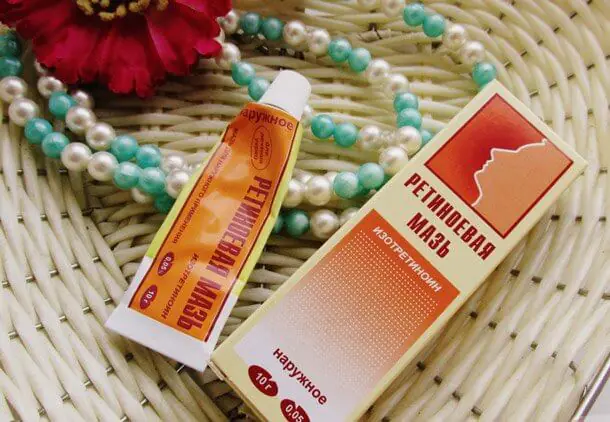
Indications and contraindications
This remedy must be used after consultation with a doctor, often when:
- skin problems (pimples, ulcers, blackheads, comedones);
- the product has a “drying” effect;
- normalizes the functioning of the sebaceous glands, reduces the formation of secretions, which is an excellent substrate for the proliferation of infection and bacteria;
- has some anti-inflammatory effect;
- activates healing processes and renewal in epithelial tissues.
Under no circumstances should you self-medicate or use the product without a doctor’s prescription.
All isotretionine-containing medications (including retinoic ointment for acne on the face), as well as vitamins A, are strong teratogens, i.e. substances that provoke severe mutations and deformities in the fetus during intrauterine development.
The ointment is contraindicated for use:
- pregnant women at any stage of pregnancy;
- when breastfeeding;
- individual intolerance;
- liver failure;
- hypervitaminosis A;
- joint therapy with tetracycline;
- disorders of the kidneys and liver.
How to use
Like any medicine, retinoic acne ointment should be used only for its intended purpose for medicinal purposes according to the instructions. When applied topically, you should adhere to the following recommendations, which describe how to use retinoic ointment for acne:
- The skin should be cleaned of impurities.
- Pat dry with a clean towel.
- Apply the composition in a thin layer evenly only to problem skin with light circular movements, being careful not to rub.
The duration and frequency of use of retinoic ointment for acne depends on the recommendations and reviews of the dermatologist, as well as the intensity of the rash. The duration of applications with retinoic ointment for acne can last up to three months in accordance with the instructions for use.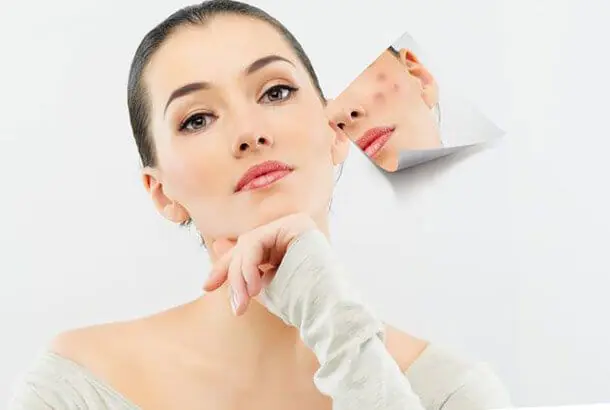
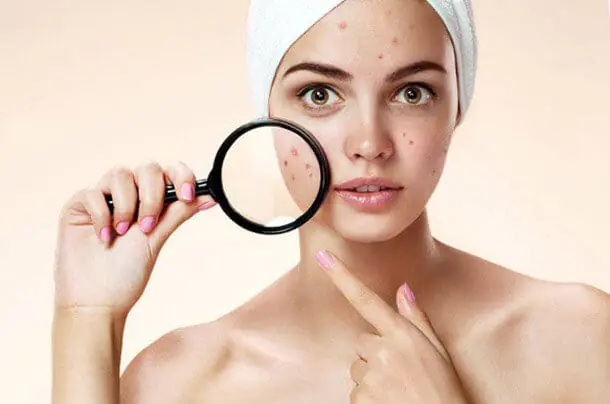
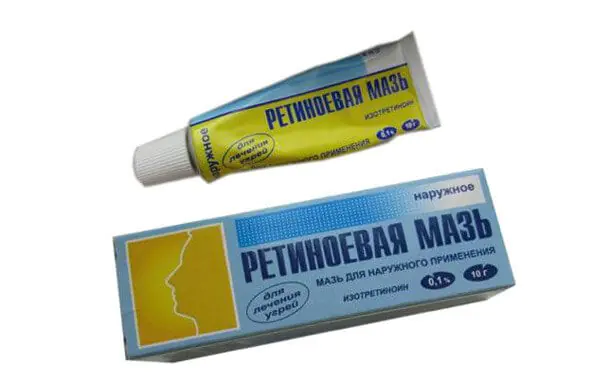
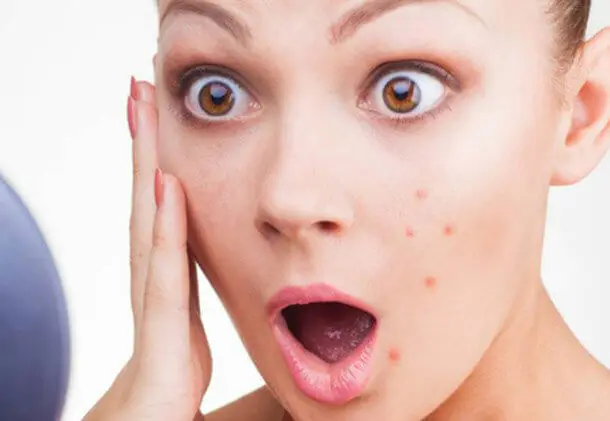
Where can I buy
| Pharmacy name | Address | A drug | Price, rub |
|---|---|---|---|
| Alexandrovskaya Pharmacy | Moscow, st. Generala Belova, 9 | Retinoic ointment 0.05% 10g | 264 |
| Planet Health | St. Petersburg, lane. Kuznechny, 17/2 A | Retinoic ointment 0.05% 10g | 295 |
| Online Pharmacy | Minsk, Nezavisimosti St. 155/1 | Retinoic ointment 0.05% | 12 bel. R |
| Online pharmacy Farmnova | Kyiv | Retinoic ointment 0.1% 10g | 379.5 UAH |
Is it possible to leave the ointment on overnight?
Retinoids are quite active substances, and compositions based on them may cause some skin reactions after use. For example, redness, peeling, mild itching. As a rule, such reactions are minor and pass quickly. But with prolonged exposure to large amounts of retinoic acne ointment, unpleasant consequences are possible, including chemical burns and blisters.
You can read reviews about use, look at before and after photos, before finding out experimentally whether retinoic ointment helps with acne. In any case, it is strongly recommended not to apply the product generously and for a long time, especially at night.
To ensure that the body is reacting normally to the drug, you can apply it to a small area of skin to monitor its reaction throughout the day.
Will acne go away forever?
It is important to realistically assess the capabilities of retinoic ointment and start from how serious the form of skin rash in the form of acne is. In numerous reviews and in the photos presented below, you can clearly observe the healing effect.
But you shouldn’t expect miraculous relief after several uses of retinoic acne ointment for severe inflammatory rashes in large quantities, although reviews and before and after photos say otherwise.
Only complex long-term therapy will give results. However, if you use retinoic ointment against small pimples, then it can be considered quite effective, allowing you to get rid of hated pimples for a long time.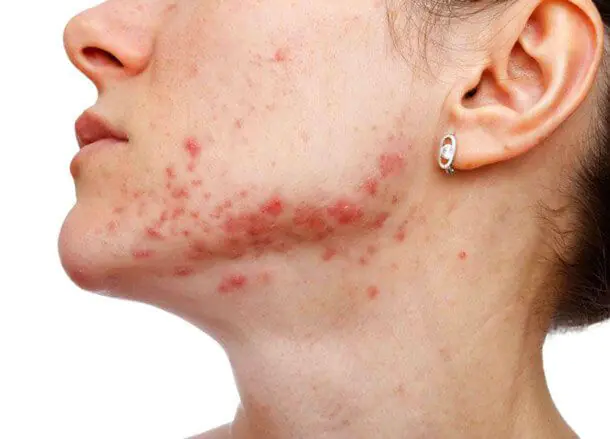
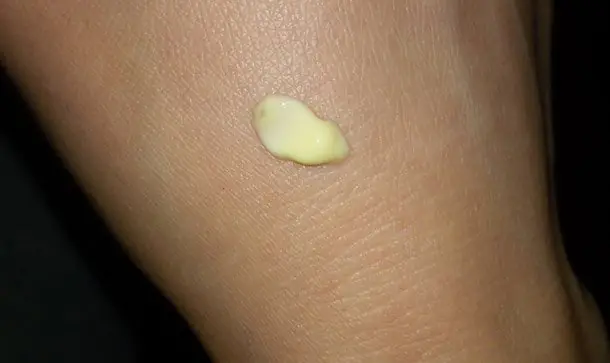
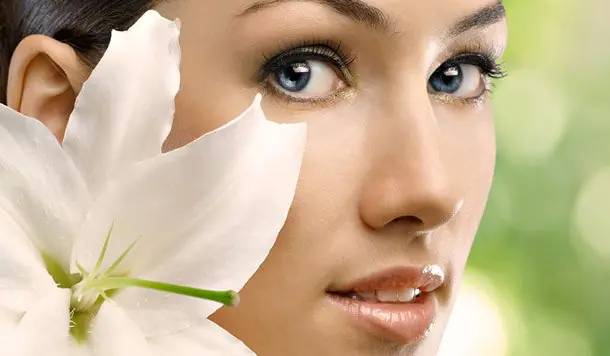
Analogues of the drug
There are not many analogues to this product. Other retinoids with similar active substances include:
As a rule, the above drugs are used, for the most part, as a tool to combat fine expression wrinkles. However, based on the composition, they can sometimes be used not only for rejuvenation, but even against inflammatory reactions on the skin.
You should not purchase or use the listed medications yourself without first consulting your doctor.
Product reviews
The analysis of opinions about retinoic ointment was based on reviews on the Internet. It should be said that this acne remedy has conflicting reviews. For the most part, they are positive, but there are also those who are not entirely happy with the effect and even received a chemical burn as a result of application.
Tatyana Golovko, 24 years old:
I’ve suffered from problem skin since I was a teenager, and I’ve tried everything I’ve tried during that time. By chance, on the Internet, I came across an article about retinoic ointment for acne. I became interested, read the reviews, and the next day I went and bought it. My skin is quite oily, but after about a week of use it became much better. Although, in the first days I could not avoid redness and peeling. As a result, it’s already the third month of using this product. The one person who benefited from retinoic acne ointment was me. I won’t say that my skin has become perfect, but there are much fewer acne spots, and my face no longer looks like a sandwich with butter. I still use the product, but a friend said that long-term use can cause burns. That is why I am going to visit a doctor to avoid negative consequences.
Oksana Pechorina, 17 years old:
My friend and I were watching TV one day, and in a program about health we heard about this ointment. It said that it helps in the fight against wrinkles and acne. I told my mom, she bought me retinoic ointment. They started using it together, only my mother for wrinkles, and I smeared it on my pimples and acne marks. My mother liked it, she says that she began to look younger, but I didn’t really like it, my skin was very hot, so I stopped using it completely. However, the problems did not end there: after 2 days, my face became very red and began to itch, so I had to run to the doctor. After an examination and a couple of tests, a burn and a severe allergic reaction were diagnosed. Now I am already treating completely different ailments. I do not recommend buying this product without consulting a doctor.
Liliya Gorodnichuk, 40 years old:
I have been familiar with this drug for quite a long time, sometimes I do so-called retinoic peels at home - a cool thing! But then my son became quite an adult, he learned all the “charms” of adolescence in the form of huge inflamed pimples on his youthful face, even on his back. She took me to a dermatologist; one of the medications he prescribed was retinoic ointment. What I want to say: it definitely helped, that’s why I left a review. For about a month we were treated for acne, of course, strictly following the instructions for use. Only then did visible results appear. The skin became much clearer, pinker, there were fewer blackheads, and the inflamed pimples disappeared completely.
Retinoic ointment for acne and age-related changes is a very popular pharmaceutical product aimed at combating skin imperfections. Thanks to its composition, in which the main role is played by natural derivatives of vitamin A, it is able to cope with many troubling problems. That is why this product has earned a single positive review not only in dermatology, but also in cosmetology.
Beneficial features

Retinoic ointment helps with acne if used correctly. The following positive changes in skin condition can be noted:
- exfoliation of dead areas of the epidermis occurs; skin metabolism is restored;
- the functioning of the sebaceous glands is normalized by reducing their secretion;
- helps against acne and blackheads, without leaving scars or scars;
- removes age spots and acne marks; inflammation around the glands is reduced;
- effective against stretch marks on the stomach and chest;
- provokes increased production of collagen in the dermis;
- stimulates its own regeneration processes;
- increases the immune properties of the skin, making them resistant to pathogenic bacteria and external irritants.
The degree of action of this medicine depends on its concentration. Having identified the troubling problem, the dermatologist prescribes a 0.05% drug (if small pimples, small wrinkles are bothering you, for prevention) or 0.1% (when there are more severe forms of rashes and obvious signs of aging).
Contraindications and side effects
Any medication is accompanied by an annotation describing the drug and its properties. The instructions for use require careful study, as they indicate the main contraindications and possible side effects.
The use of retinoic ointment is prohibited in the following cases:
- during the period of bearing a child and breastfeeding;
- if a future pregnancy is planned;
- with impaired liver and kidney function;
- excess vitamin A in the body;
- presence of chronic pancreatitis;
- if there are allergic reactions to synthetic components of the drug.
Most often, side effects occur in the first stages of treatment and disappear after some time. Also, undesirable manifestations are observed when the medicine is used incorrectly or are caused by the characteristics of the body. These include:
- dryness and peeling of the upper layers of the epidermis;
- slight burning sensation in the treated areas;
- irritation of the epidermis;
- sweating;
- an increase in the volume of rashes, as well as the size of individual pimples;
- redness and swelling at the application sites;
- increased sensitivity to ultraviolet radiation.
All these unpleasant symptoms arise due to the retinoic acid contained in it. Therefore, you should avoid overdose and strictly follow the treatment regimen indicated by the dermatologist. The topical drug is prescribed to representatives of both sexes and different age categories.
Application
Before you start fighting rashes, you need to figure out how to use this product to get the desired result and avoid side effects.
When retinoic ointment is prescribed for acne, the instructions imply the following application regimen:
- treat problem areas twice a day after thoroughly cleansing the epidermis;
- depending on the condition of the integument, the course ranges from four to six weeks.
In the first two weeks of therapy, an increase in the number of rashes is noted (thus, excess sebum is removed and metabolic processes in the dermis are stabilized). Treatment is stopped only if the rash, redness and swelling are severe. The maximum result can be assessed only after three months of use. To prevent acne from returning in the future, it is enough to treat the skin once every four days.
Since the drug has cumulative properties, to avoid an overdose, at the end of the course you should change the medicine to a product with a weaker concentration of the active ingredients.
There is another way to use retinoic ointment to avoid negative consequences for the face as much as possible.
- in the first days of use, the drug is applied only once a day, before bedtime;
- If in this case itching and redness appear, the problem areas are smeared every other day.
Over the course of two weeks, the epidermis adapts to the impact exerted on it. Then they switch to non-daily use, the number of procedures increases to twice a day. This method is suitable for people with sensitive skin and patients who do not have time for a rehabilitation period.
The basis of the ointment is Vaseline; it is considered a very greasy component that helps clog pores. This factor can harm problem skin, so the drug is applied pointwise, only to areas that require therapy.
Features of the drug
Before you start treatment with this remedy, you should familiarize yourself with some of its distinctive properties and recommendations from specialists:
- You should not treat with a retinoid before going outside in hot sunny weather, as it makes the epidermis more vulnerable to ultraviolet rays;
- When using, it is better to avoid sensitive areas (lips, skin around the eyes);
- if your skin type is dry, then this product should be combined with a nourishing cream to prevent flaking and a feeling of tightness;
- You cannot stop treatment abruptly, it is better to do it gradually;
- Initially, retinoic ointment for acne can have the opposite effect and increase the number of rashes. Do not panic, as this is a temporary phenomenon, and in a week the condition of the dermis will become much better;
- it is necessary to strictly follow the rules of application and the duration of the course, only in this case the ointment helps.
Reviews

Svetlana 24 years old:
I used different acne remedies, but they gave temporary results. I was interested in retinoic ointment for acne, reviews of which indicated a positive result. After completing the course, the effect really became noticeable. After a month, I practically got rid of not only acne, but also small wrinkles. To achieve clear skin, you need to have patience, since the first two weeks the inflammation becomes much greater, redness and peeling are disturbing.

Elizabeth 30 years old:
I have been using a lotion based on retinoic ointment for a very long time. I mix a spoonful of the product with the same volume of calendula tincture and two aspirin tablets. I apply it directly to acne and acne spots before bed. An effective method, I recommend it to everyone.

Alena 28 years old:
As summer approaches, the skin becomes more sensitive and acne appears. I took the risk of trying retinoic ointment on my own, without consulting a dermatologist. I was very afraid that it would irritate me even more (a common side effect), but this did not happen. Acne began to disappear after two weeks of treatment, and I noticed a reduction in the number of blackheads. The only drawback is that the skin becomes very dry, you have to constantly moisturize.
Retinoic ointment is a medicine, so it must be prescribed by a doctor. The drug not only removes bothersome symptoms, but also fights the causes of acne. Self-medication or violation of therapeutic standards indicated by a specialist can aggravate the situation and cause harm to the skin.
All iLive content is reviewed by medical experts to ensure it is as accurate and factual as possible.
We have strict sourcing guidelines and only link to reputable sites, academic research institutions and, where possible, proven medical research. Please note that the numbers in parentheses ([1], [2], etc.) are clickable links to such studies.
If you believe that any of our content is inaccurate, out of date, or otherwise questionable, please select it and press Ctrl + Enter.
Today in pharmacies you can find a huge number of a wide variety of drugs that help cope with acne. Among them, the most popular are lotions, gels, creams and ointments. They all have approximately the same mechanism of action. Despite the fact that the pharmaceutical industry is constantly inventing more and more new remedies for acne, one should not forget about time-tested drugs. This is exactly what retinoic ointment is.
[1], [2], [3], [4]
ATX code
Active ingredients
Pharmacological group
pharmachologic effect
Indications for use of retinoic acne ointment
Retinoic ointment is used to treat acne, but it is also often used as an effective remedy to combat the first wrinkles. This can be explained by the fact that this drug contains vitamin A.
It is worth remembering that retinoic ointment cannot always be used to treat acne. First of all, you need to pay attention that in the summer it can cause the appearance of pigmentation on the skin. This reaction is a consequence of the fact that the active components of the ointment interact with sunlight.
[5], [6], [7], [8]
Pharmacodynamics
Retinoic ointment based on the active substance isotretinoin has antiseborrheic, dermatoprotective, anti-inflammatory and keratolytic effects. Retinoic acid is considered a biologically active form of vitamin A, which is involved in the differentiation of skin cells.
The action of this ointment is based on the inhibition of hyperproliferation of the epithelium of the ducts, which are located in the sebaceous glands. The drug also helps to reduce the formation of sebum on the skin, facilitate its removal, and reduce the signs of inflammation that appear near the mouths of the excretory ducts of the sebaceous glands. Thanks to this, skin regeneration is enhanced.
[9], [10], [11], [12], [13], [14], [15], [16]
Using retinoic acne ointment during pregnancy
During pregnancy, as well as while breastfeeding, the use of retinoic acne ointment is prohibited. This is due to the presence of embryotoxic and teratogenic effects. If you are planning a pregnancy and are using retinoic ointment at the same time, you should draw the attention of your gynecologist to this fact. You may need to stop using the product.
Contraindications
In addition to pregnancy and lactation, this ointment has other contraindications:
- Taking other retinoids.
- Decompensation of heart failure.
- Allergy to isotretinoin.
- Chronic pancreatitis.
- Chronic liver and kidney diseases.
- Application to large areas of skin.
[17], [18], [19], [20], [21], [22]
Side effects of retinoic acne ointment
The occurrence of side effects from the use of this drug is extremely rare. In some patients, applying ointment to the skin may cause:
- Temporary, rapidly passing redness of the skin.
- The appearance of a large number of acne rashes, starting from the second week of use.
- Allergy to a drug.
- Conjunctivitis.
- Peeling and excessive dryness of the skin.
- Cheilitis.
[23], [24], [25], [26]
Directions for use and doses
Acne is treated with 0.05% or 0.1% retinoic ointment. Moreover, if there are too many acne on the skin, a dermatologist may recommend complex therapy, which necessarily includes this remedy. In other cases, so-called monotherapy with retinoic ointment only is possible.
After applying this ointment to the skin, isotretinoin begins to be partially absorbed through the epithelium, and partially enters the deep layers of the skin through the ducts of the sebaceous glands. The retinoid begins to concentrate primarily in the hair follicles, which helps regulate sebum production. At the same time, it becomes less viscous, and its amount is significantly reduced.
At the same time, there is a decrease in the proliferation or reproduction of cells that are located in the upper layers of the sebaceous glands. Skin flaking is noticeably reduced. The differentiation and maturation of cells in the dermis is significantly accelerated. Thanks to this, the skin is regenerated and the formation of acne is suppressed.
The main feature of retinoic ointment is the fact that it allows you to get rid of the main cause of acne - increased production of sebum. For the treatment of acne, as a rule, the following treatment regimen is used: a small amount of ointment is applied only to areas of skin with acne. It should be remembered that retinoids act slowly, so treatment courses usually last up to 12 weeks.
Please note that only a dermatologist can prescribe the correct course of treatment in your particular case.
[27], [28], [29], [30]
Overdose
It is very important when treating acne with retinoic ointment to prevent the development of hypervitaminosis A. It is characterized by the following symptoms: severe headaches, redness of the skin, nausea, increased drowsiness, vomiting, itching and dry skin. In some cases, joint pain may occur. That is why, when treating with this drug, a dermatologist should recommend stopping the use of retinol-containing products (including retinol palmitate and retinol acetate).
To treat an overdose, it is necessary to stop using retinoic ointment and prescribe symptomatic therapy using adsorbents.
[31], [32], [33], [34], [35]
Interactions with other drugs
The effect of retinoic ointment may be reduced if you simultaneously take antibiotics that are part of the tetracycline group. Also, their interaction can lead to increased intracranial pressure. Remember that isotretinoin also reduces the effectiveness of progesterone. Therefore, if you use contraceptives with a small amount of progesterone, it is recommended to change them during therapy with retinoic ointment.
[36], [37], [38], [39], [40], [41]
Storage conditions
It is recommended to store retinoic ointment at fairly low temperatures (from 2 to 8 degrees), but it should not be frozen. It is very important to store the drug in a place that is inaccessible to small children.
[42], [43], [44], [45], [46], [47], [48]



